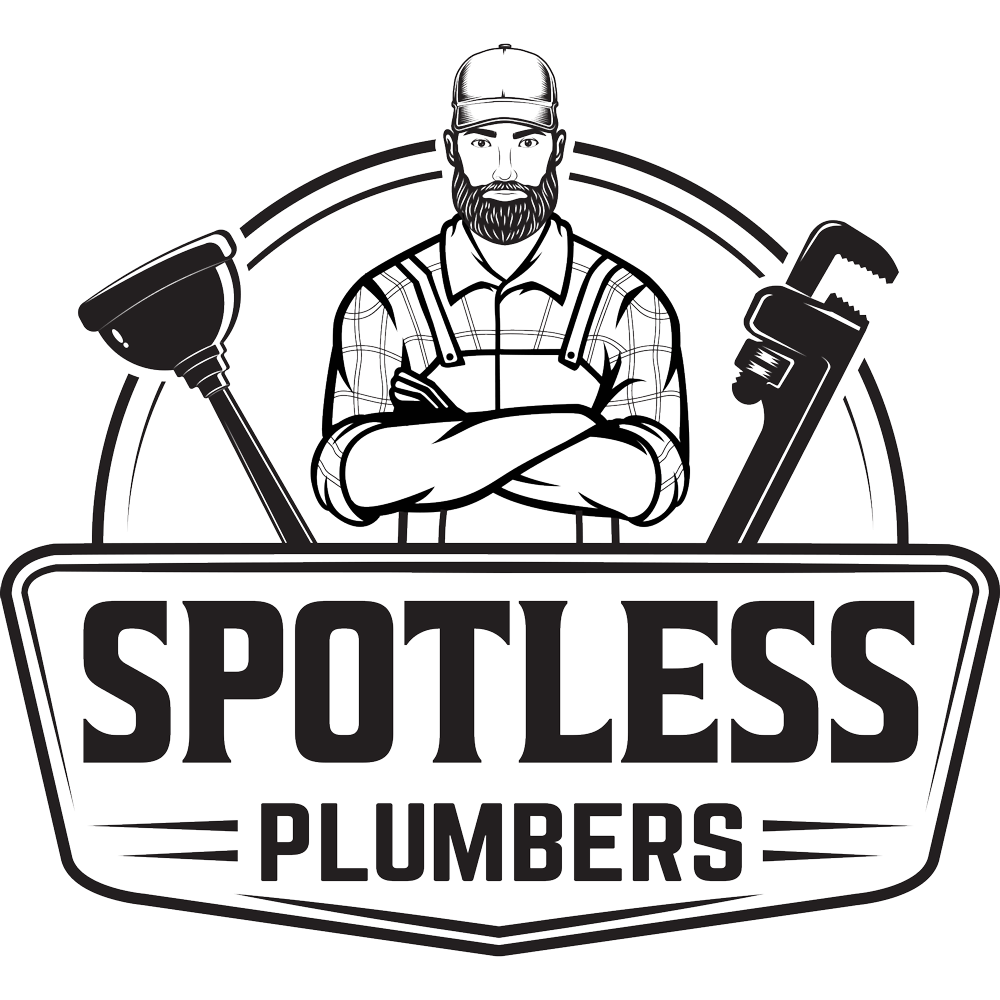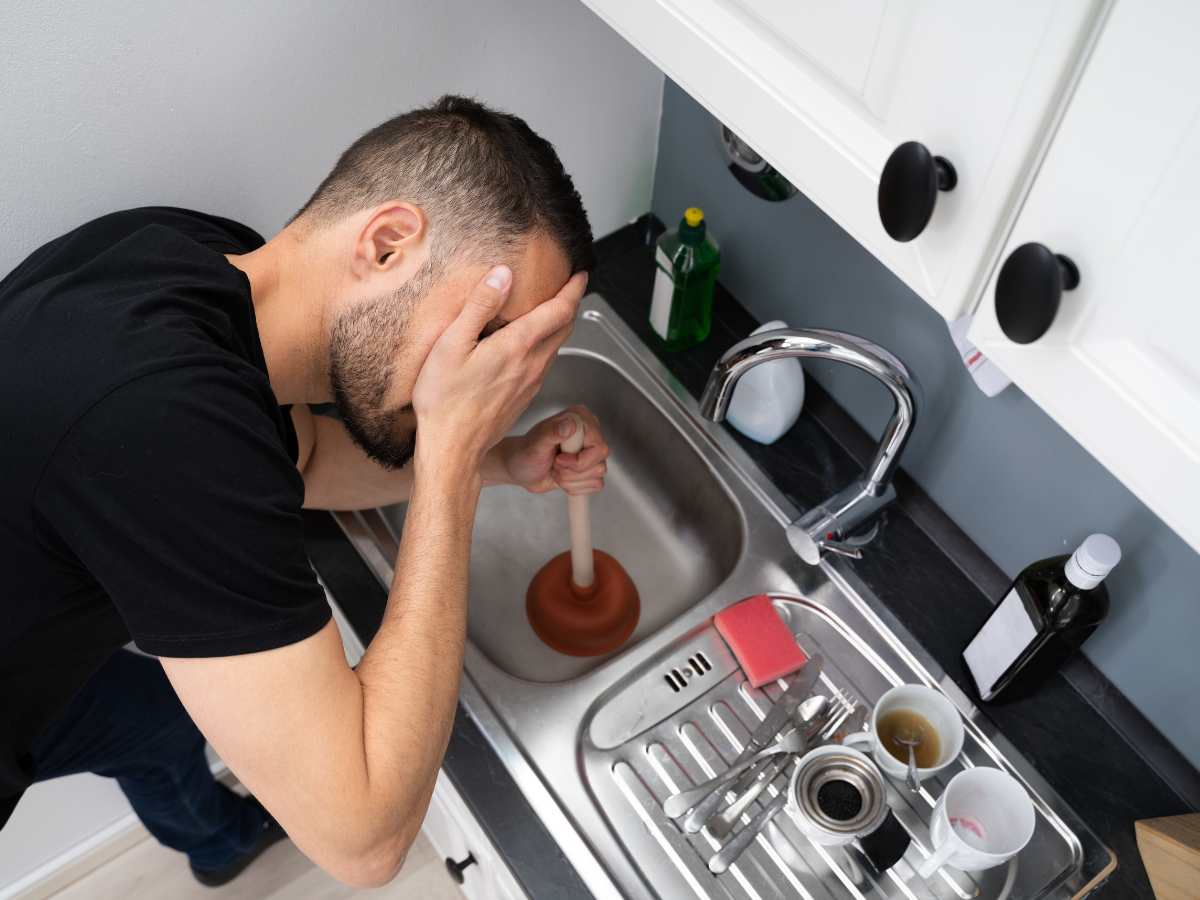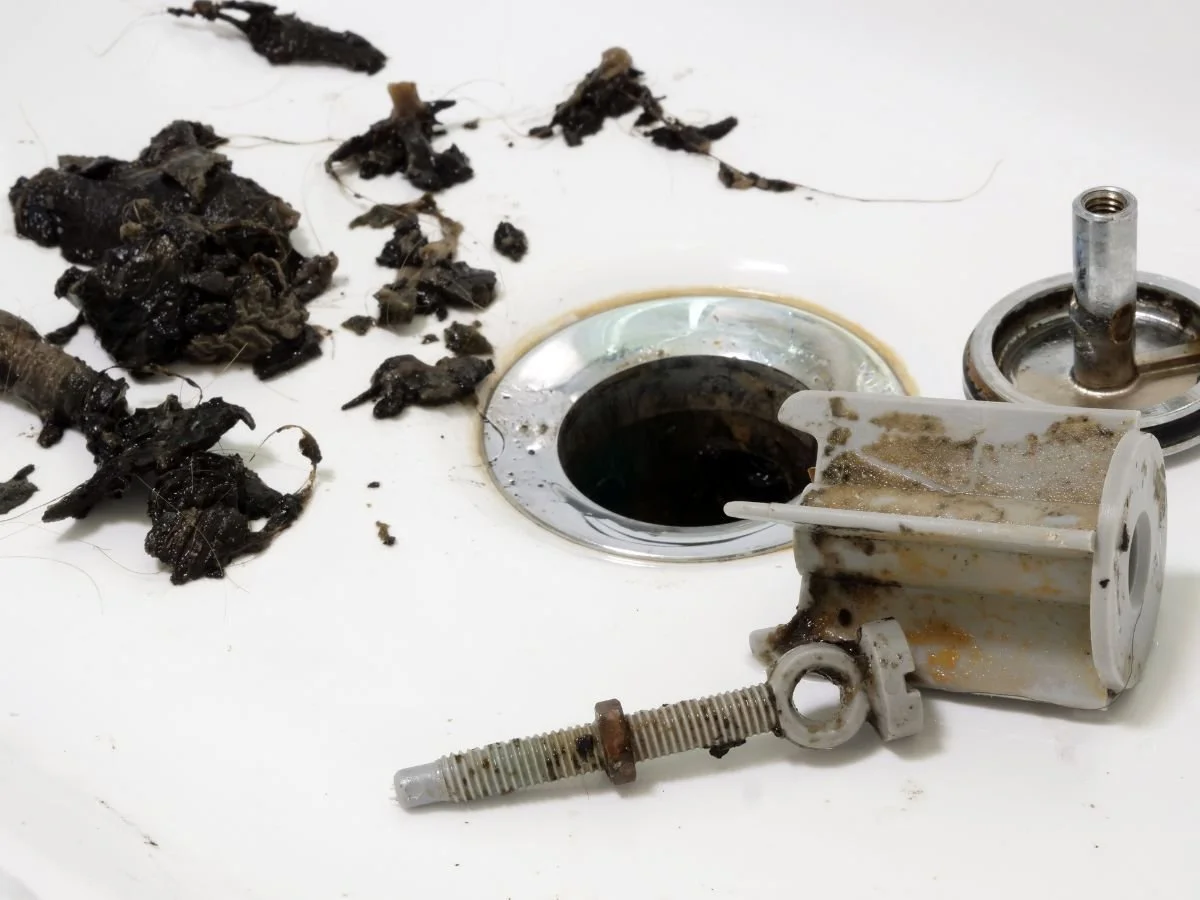Why That Sewer Drain Clog Won't Just 'Go Away' – And What You Need to Do Instead
Most sewer drain clogs are a bit like that one annoying guest who simply won’t leave. Sure, you might think it’ll clear up on its own, maybe with a little nudge here and there. Unfortunately, that’s not how these clogs work. In fact, letting them linger is a surefire way to turn a minor inconvenience into a costly catastrophe. Ignoring a sewer drain clog can invite a parade of plumbing problems—pipe bursts, unpleasant odors, even potential health risks.
The usual quick fixes rarely scratch the surface. Store-bought drain cleaners and home remedies might buy you time, but they’re no match for a clog determined to stick around. And those plungers and snakes? You’re probably more likely to damage your pipes than solve the problem.
So, what’s the real solution to a sewer drain clog that seems to have settled in for good?
As you’ll find out, the key to kicking that clog out for good lies in knowing exactly what’s causing it and addressing it the right way—because, when it comes to your plumbing, guesswork is never useful.
Let’s get into why sewer drain clogs are so stubborn and what it takes to keep them from turning into a plumber’s payday at your expense
Common Causes of a Sewer Drain Clog (It’s Probably Not What You Think)
When your sewer line gets clogged, it’s tempting to think it’s just some rogue bits of food or stray hair down the drain. But a stubborn clog has a lot more going on, and it’s rarely caused by just one offender.
Here’s a look at what could be behind your sewer drain clog—and why that “quick fix” is probably wishful thinking.
Grease and Oil Buildup
You’ve heard it before, but let’s set the record straight: dumping grease down the drain is like giving a clog a VIP pass to your sewer line. Grease may slide down easily when hot, but as it cools, it solidifies, creating sticky clogs that latch onto other debris like a magnet. And no, flushing with hot water doesn’t melt away the problem—it just sends the grease a bit farther down until it cools and sticks again. In time, that buildup becomes a wall of grime that no amount of drain cleaner will conquer.
Tree Roots in the Plumbing
If you’re dealing with older pipes, tree roots might be silently doing some damage. Roots naturally seek out moisture and nutrients, and they’re not picky—your sewer line is a prime source. Tiny cracks in the pipes can invite roots to grow right in, creating serious clogs and even pipe breakage. It’s one of those unexpected causes that homeowners rarely think about but can cause extensive (and expensive) issues without early detection. Root intrusions often call for professional drain cleaning and repair to prevent repeat clogs.
Soap Scum and Hygiene Products
Think your “all-natural” soap is better for your plumbing? It’s a nice thought, but some eco-friendly products actually clog pipes faster. Soaps with fats, oils, and waxy bases leave behind a residue that sticks to the sides of pipes, gradually narrowing the passage for water to flow through. Over time, this creates a bottleneck for other particles, turning what seemed like harmless suds into a serious clog. And don’t get us started on other hygiene products like “flushable” wipes and cotton swabs (they’re coming up next).
Non-Flushable Items
It’s hard to resist tossing “flushable” wipes down the toilet, especially when the label promises they’ll break down. Here’s the reality check: “flushable” doesn’t mean biodegradable, and these wipes often linger in your pipes, accumulating debris and creating a solid barrier that’s tough to break. Add in paper towels, dental floss, and the occasional cotton swab, and you’ve got a recipe for a sewer line clogged beyond a simple fix. Proper drain cleaning and repair become a necessity when these items get involved, as they often cause blockages too dense for DIY remedies.
Why Ignoring a Sewer Drain Clog is a Costly Gamble
Ignoring a sewer drain clog might feel like no big deal, but it’s a fast-track to costly repairs, and let’s just say the bill isn’t pretty. When left alone, a clog puts constant pressure on your pipes, steadily wearing them down. This pressure often leads to cracks and, in worst cases, pipe bursts—a mess no one wants to deal with. A single crack might start as a slow leak, but soon enough, you’re looking at a full-scale plumbing crisis that demands an emergency plumber service and sewer line cleaning—services that could’ve been avoided with a bit of prevention.
And that’s not all. Ignoring a clog can hit your wallet hard, way beyond the initial fix. Picture the price difference between a standard drain clearing and an entire pipe replacement, or even worse, the cost of repairing water-damaged walls and floors. The financial impact of a burst pipe or flooding isn’t something anyone wants to “invest” in.
As if the risk to your plumbing and budget weren’t enough, a neglected sewer drain clog can also affect your health. Stagnant water breeds bacteria and can release unpleasant gases that aren't just bothersome but potentially harmful. Sewer gases, in particular, contain hydrogen sulfide—a compound that, at certain levels, can cause headaches, eye irritation, and even more severe respiratory issues. Trusted health sources have documented these effects, underscoring why a professional sewer line cleaning is more than just good maintenance; it’s about keeping your home safe.
Water backup from a clogged drain invites mold, which brings its own set of issues and expenses. Mold remediation, structural repairs, and even minor renovations to address water damage often end up costing more than a proactive plumbing check. In other words, a small investment in clog prevention now can save you a fortune (and a headache) down the line.
Why Quick Fixes for Sewer Drain Clogs Usually Fail
There’s no shortage of “quick fixes” for a blocked sewer line, but most of them have one thing in common: they don’t work, at least not for long. Take chemical drain cleaners, for example. While they may seem like an easy fix for a clogged sewer drain, these corrosive liquids do far more harm than good. Studies have shown that many drain cleaners can erode pipes over time, especially if they’re used frequently. That’s right—those “miracle” chemicals are more likely to add “pipe replacement” to your budget than to provide a lasting solution. (And they’re not exactly eco-friendly, either.)
Then there’s plunging and snaking. A good plunger might be the go-to for minor clogs, but when it comes to a sewer drain that’s seriously clogged, plunging can be a recipe for disaster. Excessive plunging puts added pressure on the pipes, and in some cases, it even dislodges pipe joints or creates small leaks. Snaking might sound like a professional solution, but DIY snaking often misses the mark and pushes the blockage further down, setting up the perfect conditions for a clog to come right back.
And let’s not forget those DIY hacks floating around online. Baking soda and vinegar might be a great duo for cleaning your sink, but when it comes to a stubborn sewer drain clog, they’re more smoke than substance. These mixtures might fizz and bubble, but they rarely make it deep enough to clear out the real problem.
When it comes down to it, quick fixes tend to offer temporary relief at best. So if you’re dealing with a blocked sewer line that seems to have settled in for the long haul, it’s probably time to skip the quick tricks and get to the real fix.
Here’s What You Actually Need to Do about a Sewer Drain Clog
When it comes to a stubborn sewer drain clog, quick fixes are about as effective as trying to empty a sinking ship with a spoon. If you’re serious about clearing out that clog for good, here’s what you actually need to know.
1. Professional Plumbing Inspection
To start, getting a professional plumbing inspection is non-negotiable. Experts don’t just poke around guessing; they use specialized cameras that go straight into your pipes, pinpointing exactly where and what the issue is. This isn’t just some gimmick either. A camera inspection saves you the time, mess, and cost of trial-and-error guesswork. By identifying the source of your clog (whether it’s grease, roots, or the dreaded “flushable” wipes), professionals can target their efforts effectively, often reducing the total repair cost in the process. In other words, paying a bit upfront for an expert inspection means you save on those endless DIY supplies and treatments that rarely solve the actual problem.
2. Hydro-Jetting: Safe, Effective, and Green
Once the inspection has done its job, it’s time to talk about clearing that clog the right way. Enter hydro-jetting. This isn’t your typical chemical cleaner or plunger hack. Hydro-jetting blasts high-pressure water through your pipes, breaking up blockages without damaging the pipe itself. It’s thorough, environmentally friendly, and capable of wiping out everything from mineral deposits to grease layers. This method not only clears the immediate clog but also helps prevent new ones from forming since it removes every last bit of gunk. For anyone wondering how to unclog a sewer drain without risking your pipes, hydro-jetting is a true lifesaver.
3. Root Barriers and Preventive Treatments
If tree roots are involved in clogging your sewer drain pipe, a different approach is in order. Roots seek out water sources, and once they’ve found your pipes, they don’t back off. Installing root barriers or applying preventive treatments can prevent this from becoming an ongoing issue. A root barrier physically stops roots from accessing the pipes, while specific treatments deter regrowth without harming your trees or plants. The payoff? You don’t just solve today’s clog; you protect your pipes for the future, saving yourself both repair costs and that constant “what’s next” worry.
4. Preventive Maintenance for Long-Term Results
Lastly, the golden rule of plumbing: don’t wait for a clog to become a crisis. Scheduling regular inspections, especially if your pipes have a history of clogging, is the best way to avoid backups altogether. Prevention might not sound glamorous, but when it’s the difference between a smoothly flowing sewer line and a costly disaster, it’s worth every penny. Following up with occasional clean-outs ensures any buildup is handled before it causes issues, making those desperate, last-minute unclog attempts a thing of the past.
Long-Term Prevention Tips for Keeping Sewer Drains Clear
Keeping sewer pipes in good shape isn’t about quick fixes—it’s about smart habits that spare you the joy of a surprise sewer backup. While most clogs seem minor at first, they’re notorious for escalating (and emptying wallets) if left unchecked.
Here’s what the pros know about keeping sewer drains and pipes clear over the long haul.
Regular Inspections: Stop Sewer Surprises Before They Start
You wouldn’t skip a regular car tune-up, right? Think of annual or semi-annual plumbing inspections as a preventive tune-up for your sewer pipes. Especially in older homes, pipes wear down over time, and small issues can creep up without any warning. Regular inspections catch these sneaky problems early, preventing sudden (and often very costly) emergencies. Think of it as the plumbing equivalent of saving yourself from a surprise mechanic bill.
Be Mindful of What Goes Down the Drain
Here’s a tip that’s as basic as it is true: only put things down the drain that the drain can handle. That means no grease, no “flushable” wipes, and certainly no harsh chemicals. Grease solidifies in pipes faster than you’d think, creating a sticky mess that traps other debris.
Let grease cool in a jar and toss it in the trash—your sewer pipes will thank you. As for wipes, “flushable” is a label, not a promise. They don’t disintegrate like toilet paper, meaning they’re practically magnets for clogs.
Install Drain Screens or Filters (Small Investment, Big Payoff)
Drain screens might not look like much, but they’re game-changers for sewer drain health. These inexpensive filters block hair, soap scum, and other debris from slipping into the pipes and setting up camp. Less debris down the drain means fewer clogs, which means fewer calls to your plumber. Plus, screens are easy to clean and replace, making them one of the simplest preventive measures you can take.
-
A: You’ll know your sewer drain is likely clogged if you notice multiple slow-draining fixtures (like sinks, tubs, or toilets), gurgling sounds from drains, or unpleasant odors coming from pipes. In severe cases, wastewater might even back up into lower-level drains. These signs mean the main sewer line may be blocked, and prompt attention can prevent more serious plumbing issues.
-
A: To keep your sewer line from clogging, focus on prevention:
Schedule Regular Inspections: Have a professional check your sewer line annually or semi-annually to catch minor issues before they turn into major clogs.
Watch What Goes Down the Drain: Avoid pouring grease, oil, and food scraps down the kitchen sink, and keep non-flushable items like wipes out of the toilet. Even so-called “flushable” wipes don’t break down like toilet paper and can block pipes.
Use Drain Screens: Install drain screens to catch hair, soap scum, and debris before they enter your pipes. These inexpensive filters are easy to clean and help prevent clogs.
-
A: To permanently unclog a drain, first identify the root cause of the clog. For common issues like grease, soap scum, or small debris, professional hydro-jetting is effective as it clears the buildup without harming your pipes. For more severe clogs, like those caused by tree roots or solidified blockages, a plumber may use specialized equipment, such as an auger or a video camera inspection, to remove the obstruction at its source. Following this with routine maintenance, drain screens, and mindful disposal of grease and non-flushable items can prevent future clogs from forming.
READ MORE…
How much does plumbing cost for a new house? Here’s why your estimate might be way off
How does plumbing work? What your plumber knows that you don't
What your shower plumbing diagram says about your home’s plumbing—and it's really pretty




